A Sustainable Strategy to Fight Cancer and Diabetes
INSIDE ACADEMIA
In the United States, more than 15 million people have some form of cancer, and more than 100 million people have diabetes or prediabetes; these are the second (cancer) and seventh (diabetes) leading causes of death in the United States. As scientists around the world continue to study cancer and diabetes, a cure for either disease remains elusive. Despite the absence of permanent solutions, strategies to prevent or treat cancer and diabetes continue to emerge. While type 1 diabetes cannot be prevented, virtually all cases of type 2 diabetes can be prevented and certain cancers can be as well. Researchers in the department of nutrition, dietetics, and food science at Brigham Young University (BYU) are studying compounds in cocoa, grapes, and oats that demonstrate anticancer and antidiabetic abilities. Through their investigations of these and other natural food compounds, the vision of a world without cancer and diabetes comes closer to existence.
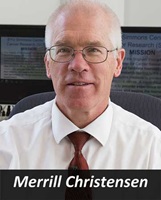 In the human body, cells grow and divide to form new cells as needed, and normally, when cells grow old or suffer damage, they die and new cells take their place. When this process breaks down, however, tumors occur. In fact, a number of small tumors are always developing in the human body, but the immune system usually kills them. Cancer is the result of the uncontrolled growth of abnormal cells that the immune system has not been able to kill off. The immune system has checks and balances that are influenced by a number of intrinsic and nonintrinsic factors such as genetics, tumor genesis, lifestyle habits, and diet. “Wouldn’t it be nice if we could just eat the right foods and never get cancer or heart disease? That’s not going to happen,” says Merrill Christensen, a professor and chair of BYU’s department of nutrition, dietetics, and food science. “The reason is that chronic diseases are not simple nutrient deficiency diseases.” Diseases such as scurvy, beriberi, and pellagra—which are caused by, respectively, insufficient intake of vitamin C, thiamin, and niacin—are simple nutrient deficiency diseases. “Heart disease, cancer, diabetes—these are multifactorial diseases with many different causes: genes, diet, [and] environmental exposure,” Christensen explains. Yet as more and more evidence emerges about the roles that food and food components (vitamins, minerals, and phytochemicals) can play in preventing or mitigating certain cancers as well as other chronic diseases, researchers now believe that up to 50% of all cancers may be preventable through lifestyle changes and a nutritious diet. “There are some foods and some components of foods that have been shown to have dramatic effects on cancer reduction,” Christensen says. Avenanthramides in oats and resveratrol in grapes and peanuts fall into that category.
In the human body, cells grow and divide to form new cells as needed, and normally, when cells grow old or suffer damage, they die and new cells take their place. When this process breaks down, however, tumors occur. In fact, a number of small tumors are always developing in the human body, but the immune system usually kills them. Cancer is the result of the uncontrolled growth of abnormal cells that the immune system has not been able to kill off. The immune system has checks and balances that are influenced by a number of intrinsic and nonintrinsic factors such as genetics, tumor genesis, lifestyle habits, and diet. “Wouldn’t it be nice if we could just eat the right foods and never get cancer or heart disease? That’s not going to happen,” says Merrill Christensen, a professor and chair of BYU’s department of nutrition, dietetics, and food science. “The reason is that chronic diseases are not simple nutrient deficiency diseases.” Diseases such as scurvy, beriberi, and pellagra—which are caused by, respectively, insufficient intake of vitamin C, thiamin, and niacin—are simple nutrient deficiency diseases. “Heart disease, cancer, diabetes—these are multifactorial diseases with many different causes: genes, diet, [and] environmental exposure,” Christensen explains. Yet as more and more evidence emerges about the roles that food and food components (vitamins, minerals, and phytochemicals) can play in preventing or mitigating certain cancers as well as other chronic diseases, researchers now believe that up to 50% of all cancers may be preventable through lifestyle changes and a nutritious diet. “There are some foods and some components of foods that have been shown to have dramatic effects on cancer reduction,” Christensen says. Avenanthramides in oats and resveratrol in grapes and peanuts fall into that category.
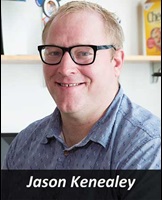 Natural Anticancer Compounds
Natural Anticancer Compounds
Avenanthramides and resveratrol are both compounds that certain plants make to help defend themselves from pathogens. Jason Kenealey, an assistant professor in the department of nutrition, dietetics, and food science at BYU, has been investigating these compounds to determine whether they can be used to create natural chemotherapeutic agents. “The real difficulty of chemotherapy and developing chemotherapeutics is that most of them … target both cancer cells and normal cells that are dividing in the body,” Kenealey explains. “That’s why you get a lot of the negative side effects: Losing your hair and those sorts of things are because you’re killing these normal cells.” In studies that he and other researchers have conducted, avenanthramides have been shown to kill breast cancer cells, and resveratrol has been shown to kill both breast cancer cells and prostate cancer cells. However, the aspect about these natural compounds that Kenealey finds most appealing is their nature-designed biochemistry, which allows them to target signaling molecules unique to cancer cells while leaving normal cells undisturbed. “What I find is that nature is such a great chemist. There all these molecules that even our organic chemistry buddies … would have a hard time thinking up because nature is just so creative,” Kenealey says.
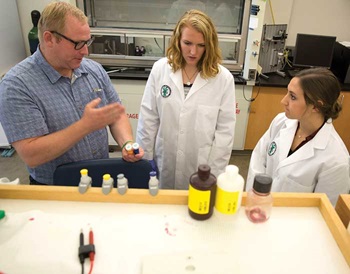 To learn more about how avenanthramides and resveratrol target certain cells and not others, Kenealey and his research team use isothermal titration calorimetry—a gold-standard technique to analyze intermolecular interactions. “This is a really nice system that you can use to look at binding interactions between compounds like resveratrol or avenanthramides and their protein targets,” he reveals. This protein biochemistry technique helps Kenealey and his research team learn more about how avenanthramides and resveratrol work. “[What] we’re interested in [is] when you eat these compounds, what proteins in your body do they interact with and how do they interact,” he says. “How do these [compounds] affect cancer cells? Do they kill them? Do they just stop them from dividing? And if they kill them, how do they kill them? What mechanism do they use? Do they go through apoptosis or necrosis? So we’re really interested in teasing apart how they’re working.” His objective is to figure out how avenanthramides and resveratrol work, determine whether he can make them more effective, and unravel how they are synthesized so that they can be synthesized in laboratories for use in supplements or pharmaceuticals. “As we understand better how [natural bioactive compounds] are synthesized, … it makes it better for us to be able to synthesize them,” Kenealey explains. “I’m actually interested in a lot of different enzymes because enzymes are a great way to make compounds in a nontoxic way.”
To learn more about how avenanthramides and resveratrol target certain cells and not others, Kenealey and his research team use isothermal titration calorimetry—a gold-standard technique to analyze intermolecular interactions. “This is a really nice system that you can use to look at binding interactions between compounds like resveratrol or avenanthramides and their protein targets,” he reveals. This protein biochemistry technique helps Kenealey and his research team learn more about how avenanthramides and resveratrol work. “[What] we’re interested in [is] when you eat these compounds, what proteins in your body do they interact with and how do they interact,” he says. “How do these [compounds] affect cancer cells? Do they kill them? Do they just stop them from dividing? And if they kill them, how do they kill them? What mechanism do they use? Do they go through apoptosis or necrosis? So we’re really interested in teasing apart how they’re working.” His objective is to figure out how avenanthramides and resveratrol work, determine whether he can make them more effective, and unravel how they are synthesized so that they can be synthesized in laboratories for use in supplements or pharmaceuticals. “As we understand better how [natural bioactive compounds] are synthesized, … it makes it better for us to be able to synthesize them,” Kenealey explains. “I’m actually interested in a lot of different enzymes because enzymes are a great way to make compounds in a nontoxic way.”
Besides probing the chemotherapeutic and chemopreventive abilities of avenanthramides and resveratrol, Kenealey is also assisting Christensen in unraveling the various effects that selenium has on prostate cancer. “To us, it’s a very interesting story because unlike iron, zinc, and other trace elements, the chemical form of selenium determines its biological effect,” Christensen reveals. Each chemical form of selenium is unique in what properties it possesses and which set of genes it regulates. “We have [tested] different chemical forms of selenium,” Christensen says. “We know that [one] form works as an antioxidant, [one] form works by inhibiting blood vessel formation to bring nutrients and oxygen to the tissue, [and] one works by turning on programmed cell deaths (so the cells commit suicide, which is a good thing in the case of cancer cells). So if you have an antioxidant, an anti-inflammatory, an anti-angiogenic, and a pro-apoptotic, you put all of that together, and you [can] come at cancer from four different directions and four different mechanisms.” Christensen and Kenealey use a technique called response surface methodology to figure out which mixture of selenium forms would have the greatest impact on various forms of prostate cancer. “We can actually take three, four, or five compounds, mix them together, and identify which mixture of compounds is the most effective in preventing disease or in treating disease,” Kenealey explains. Response surface methodology allows Christensen, Kenealey, and other researchers to explore combinations of selenium (or other nutrients and phytochemicals) with existing chemo-therapeutics or other compounds to create better chemotherapeutics or chemopreventive compounds. “Combination is the flavor of the month, now,” Christensen asserts, “and people are looking at combining natural products—including nutrients—with already approved chemotherapeutic agents.”
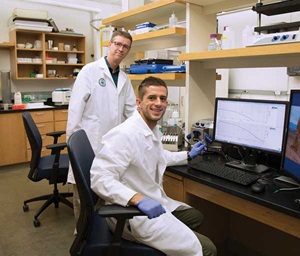 The Fraternal Twins of Diabetes
The Fraternal Twins of Diabetes
While Christensen and Kenealey spend their time investigating better ways to treat or prevent cancer, other researchers in the department of nutrition, dietetics, and food science are focused on finding better ways to treat or prevent type 1 and type 2 diabetes. “Both types of diabetes are problems in glucose regulation,” says Chad Hancock, an associate professor in BYU’s department of nutrition, dietetics, and food science. “[But] they differ supremely with respect to how they develop. Type 1 diabetes develops quite suddenly over the course of weeks and maybe even a month—maybe even less than that.” In addition, type 1 diabetes is considered an autoimmune disease because the immune system destroys the cells responsible for creating the hormone insulin: beta cells. “In type 1 diabetes, what happens is your immune system sees your beta cells as foreign, … and it kills them,” explains Jeffery Tessem, an assistant professor in the department of nutrition, dietetics, and food science at BYU. “You end up losing [more than] 90% of those beta cells. And because—with a few exceptions—we don’t make beta cells after adolescence, [you] can’t produce insulin. So [type 1 diabetics] have to be treated with insulin for the rest of their lives.”
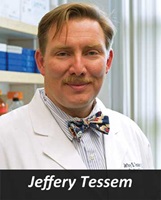 Type 2 diabetes progresses much more slowly than type 1 because type 2 diabetics still have beta cells. “There’s some debate [on whether] those beta cells work properly. There’s growing information that says in the onset of type 2 diabetes, those beta cells aren’t doing what they should be doing,” Tessem says. Normally, after meal consumption, the level of glucose in the bloodstream rises; in nondiabetics, this triggers the beta cells in the pancreas to release insulin. Insulin then prompts adipose and muscle cells to absorb glucose, which lowers the blood glucose level. In type 2 diabetics, this process is impaired. “The problem is more with what we call peripheral tissue—the liver, the muscle, the adipose (or the fat)—and its ability to respond to insulin. It’s almost as if those tissues need glasses; they can’t see the insulin,” Tessem explains. “And because they can’t see it, they can’t respond to it properly and pull the glucose out of circulation.” This insulin resistance causes the beta cells to overproduce insulin for some time. “Initially patients that have type 2 diabetes are treated with drugs that are insulin-sensitizing. They help those tissues respond to insulin and take the glucose up, [but] as type 2 diabetes progresses, [type 2 diabetics] lose their beta cells as well,” Tessem says. However, type 2 diabetics don’t lose their beta cells to the extent that type 1 diabetics do: Type 1 diabetics lose 90% or more of their beta cells while type 2 diabetics may lose between 60%–80% of their beta cells. “So a lot of type 2 diabetics will go from needing to have insulin-sensitizing drugs to help them respond to needing to have insulin plus insulin-sensitizing drugs,” Tessem adds.
Type 2 diabetes progresses much more slowly than type 1 because type 2 diabetics still have beta cells. “There’s some debate [on whether] those beta cells work properly. There’s growing information that says in the onset of type 2 diabetes, those beta cells aren’t doing what they should be doing,” Tessem says. Normally, after meal consumption, the level of glucose in the bloodstream rises; in nondiabetics, this triggers the beta cells in the pancreas to release insulin. Insulin then prompts adipose and muscle cells to absorb glucose, which lowers the blood glucose level. In type 2 diabetics, this process is impaired. “The problem is more with what we call peripheral tissue—the liver, the muscle, the adipose (or the fat)—and its ability to respond to insulin. It’s almost as if those tissues need glasses; they can’t see the insulin,” Tessem explains. “And because they can’t see it, they can’t respond to it properly and pull the glucose out of circulation.” This insulin resistance causes the beta cells to overproduce insulin for some time. “Initially patients that have type 2 diabetes are treated with drugs that are insulin-sensitizing. They help those tissues respond to insulin and take the glucose up, [but] as type 2 diabetes progresses, [type 2 diabetics] lose their beta cells as well,” Tessem says. However, type 2 diabetics don’t lose their beta cells to the extent that type 1 diabetics do: Type 1 diabetics lose 90% or more of their beta cells while type 2 diabetics may lose between 60%–80% of their beta cells. “So a lot of type 2 diabetics will go from needing to have insulin-sensitizing drugs to help them respond to needing to have insulin plus insulin-sensitizing drugs,” Tessem adds.
Engaging in physical activity is another way for type 2 diabetics to improve insulin sensitivity. “There’s no question that an increase in physical activity improves insulin sensitivity of the muscle, and you can clear glucose,” Hancock emphasizes. This is because skeletal muscle takes up more glucose than other organs in the body. “Roughly 40% of your body mass is skeletal muscle,” Hancock continues. “That’s the major insulin-sensitive tissue.” Restricting caloric intake is also very effective at improving insulin sensitivity, Hancock asserts, which means that obesity and a sedentary lifestyle are often seen as risk factors for type 2 diabetes. “That’s true, but there’s a very strong genetic aspect to it. Sometimes we lose that familial tie because we grow up in families that have the same response to exercise and same response to food, but there is a very strong genetic aspect to it,” Tessem clarifies. “Not every individual who’s obese will become type 2 diabetic. I think that’s important to recognize.”
Natural Antidiabetic Compounds
The research Tessem and Hancock perform aids in addressing some key issues with both types of diabetes: protecting beta cells, producing more beta cells, making beta cells function better, and improving insulin sensitivity. Their studies have shown that certain food compounds may be helpful in some of these matters. Tessem, along with Andrew Neilson, an associate professor of food science at Virginia Polytechnic Institute and State University, has been investigating the phytochemical epicatechin. “Epicatechin is a phytochemical that’s found in a number of plants, but what we’ve been looking at is … cocoa. Cocoa has a very high amount of epicatechin in different forms,” Tessem says. “We’ve shown that the monomeric form of epicatechin is able to cause beta cells to secrete insulin at a higher rate. [This means] if you take a beta cell and you expose it to glucose, it will release insulin. But if you give that same [beta] cell an epicatechin in the same concentration of glucose, it will significantly enhance the amount of insulin it releases.” These results were published about a year ago, but recently, Tessem and his colleagues determined something new: “These phytochemicals are exerting their effect through a secondary method,” Tessem reveals. “They’re actually being metabolized in the gut by the gut bacteria, and it’s the small compounds that then cross the gut and make their way into circulation. And we’ve shown that there are three derivatives of epicatechin that are actually absorbed much better than epicatechin is.” The epicatechin derivatives also enhance insulin secretion from beta cells. “We’re pretty excited about that information,” Tessem exclaims.
Hancock and his research team have been analyzing the effect of curcumin on insulin sensitivity. They are investigating whether curcumin—a bright yellow compound present in turmeric and other plants—has a beneficial effect on mitochondria. “The mitochondria is the powerhouse of the cell; it’s where you convert the energy from food to the energy that the cell uses,” Hancock says. “When you exercise, especially endurance exercise, you [use] more mitochondria and certainly you’re more insulin-sensitive.” It therefore seems logical that optimizing mitochondrial activity in tissue cells would be associated with enhanced insulin sensitivity. “We were looking at how curcumin may affect mitochondrial function in skeletal muscle myoblasts (that’s actually a pre-skeletal muscle cell).” The results of their studies indicate that small doses of curcumin reduced the efficiency of mitochondria in myoblasts, which seems counterintuitive to improving insulin sensitivity. However, “the reality is that if you’re not being active and using your mitochondria and you’re just giving [them] a lot of fuel,” Hancock clarifies, “that mitochondria [are] going to produce some reactive oxygen species. And that will interfere (keeping the story short) with insulin signaling and can confer some insulin resistance. So if the mitochondria [are] a little less efficient, [they] will produce less reactive oxygen species.” This means that for elite athletes, curcumin treatment would not be ideal, “but it might be effective to improve insulin sensitivity in an everyday Joe,” Hancock advises.
While isolating and concentrating natural compounds to treat chronic disease is a promising area of research, the effectiveness of any compound also depends on a person’s genetics. “There’s a huge [amount] of literature out there showing how diet regulates the expression of genes, turning things on [and] turning things off, epigenetic mechanisms, and these sorts of things,” Christensen says. Emerging research in the field of nutritional genomics indicates that a person’s genotype determines whether certain foods or food compounds will be effective against disease. “We are at the point now where we’ve identified enough … polymorphisms—these subtle differences in the same gene between different people that increase their risk or decrease their risk,” Christensen explains, “[so] if you ask me, ‘If I eat this, will this happen?’ I’m always going to say it depends on your genes.” Still, the research that Christensen, Kenealey, Tessem, and Hancock are performing on phytochemical and other food compounds is foundational and will help inform the development of preventive and therapeutic agents for both cancer and diabetes. “We’re using nature,” Kenealey says. “Most of the drugs that are approved by the [U.S. Food and Drug Administration] are natural products or close derivatives to natural products, and many of them come from food products.”
Training Future Scientists
Finding cures and better treatments for cancer, diabetes, and other chronic diseases requires generating a strong interest in degrees and careers in science and technology. At BYU, the emphasis is on preparing undergraduate students to be the scientists, engineers, and other problem solvers of tomorrow. “Our primary focus at BYU … is undergraduate education and training,” Christensen says. “We’re one of the top five suppliers of PhD students to other colleges and universities around the country.” Christensen, Kenealey, Tessem, and Hancock all completed their undergraduate degrees at BYU before going to other schools to obtain doctorate degrees. As undergrads, they received experiential learning that was central in shaping their research interests and career objectives. “I loved my experience as an undergrad at BYU,” Kenealey exclaims. “I loved being able to do chemistry and apply what I was learning in my classes. … So the idea of coming back here and teaching and giving that experience to other students was really appealing to me.” Thus, not only does the research at BYU bring the vision of a world without cancer and diabetes closer to existence, but the university is also actively training undergraduates to be future cancer and diabetes researchers.
And while the emphasis at BYU may be on providing excellent research experiences to inspire students to become future leaders in their field, Tessem says that his students inspire him as well. Some of the student researchers in Tessem’s laboratory have type 1 diabetes. “It’s really easy as a bench scientist to get sucked into what I call the ‘gee-whiz’ science,” Tessem observes. “Having the students in my lab who are diabetic gives us this constant reminder that there’s a face to the disease that we’re trying to cure. … They are people that we love, and they’re our friends. Watching them work so hard, watching them deal with everything that they need to deal with, [I] recognize that we’re not just doing this because of the gee-whiz factor. We’re doing things because we want to cure it and we want to make it better for each one of them.” It is clear that Christensen, Kenealey, and Hancock share this sentiment. “Overall, what we see in the data is that prevention is not a quick fix. There’s no one pill that you can take that’s going to prevent cancer,” Kenealey concludes. “[We want] to help prevent some of the suffering.”
Toni Tarver
is senior technical editor of Food Technology magazine ([email protected]).
